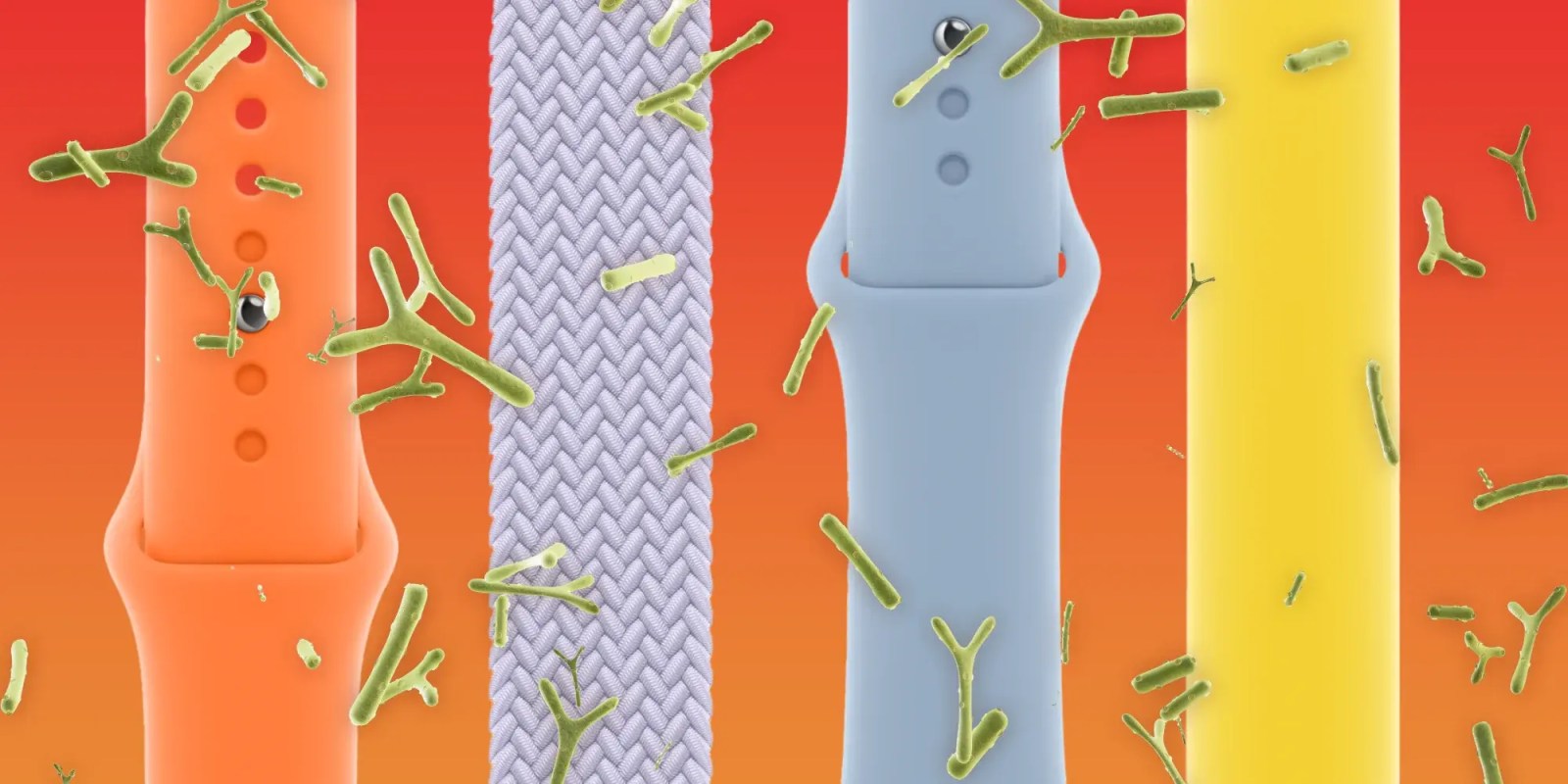
In what will come as wholly unsurprising news for many people, your Apple Watch band is a breeding ground for bacteria. New research published in the Advances in Infectious Diseases journal goes more in-depth on the issue, finding a correlation between certain types of Apple Watch bands and higher levels of bacteria.
The study, as first spotted by the New York Post, was done by a team of researchers from Florida Atlantic University. The study consisted of bands for the Apple Watch and other wearables made from rubber, cloth, leather, plastic, gold, and silver. The goal was to find a “between the material of the wristband and bacteria build-up.”
Right off the bat, the study found that 95% of all bands were “contaminated with some kind of dangerous bacteria.” The most common type of bacteria attracted by Apple Watch bands is Staphylococcus spp, which can cause staph infections, and it was found on 85% of bands. The researchers point out, however, that this “was not unexpected.”
What researchers found more notable was the 30% prevalence of pseudomonas aeruginosa, a type of germ that the CDC says can cause pneumonia, infections in the blood, and more. Researchers also pointed out that 60% of wearables tested contained E. coli bacteria.
Bacteria found in the study were common skin residents of the genera Staphylococcus and Pseudomonas, and intestinal organisms of the genera Escherichia, specifically E. coli. Staphylococcus spp was prevalent on 85 percent of the wristbands; researchers found Pseudomonas spp on 30 percent of the wristbands; and they found E. coli bacteria on 60 percent of the wristbands, which most commonly begins infection through fecal-oral transmission.
The gym-goer showed the highest staphylococcal counts, which emphasizes the necessity of sanitizing wristbands after engaging in rigorous activity at the gym or at home.
Staphylococcus aureus is a type of bacteria found on human skin, in the nose, armpit, groin or other areas that cause a wide variety of clinical diseases. Pseudomonas spp., commonly in the environment, can cause infections in the blood, lungs (pneumonia) or other parts of the body after surgery. Enterobacteria are a large family of bacteria including many of the more familiar pathogens such as E. coli and Salmonella.
Unsurprisingly, participants in the study who wear their Apple Watch or other device during workouts showed the highlight levels of bacteria. “The gym-goer showed the highest staphylococcal counts, which emphasizes the necessity of sanitizing wristbands after engaging in rigorous activity at the gym or at home,” the study says.
Top comment by macmaverickk
People don’t already clean their bands regularly…? Give your sport band a whiff after a couple days… even if you’re not sweating, it’s nasty.
In terms of band materials, the researchers say that cloth, rubber, and plastic bands had the highest levels of bacterial counts, followed by leather. Metal bands were found to carry very little bacteria, likely due to the fact they aren’t commonly worn during workouts.
The study concludes by explaining that these numbers highlight how important it is that users of the Apple Watch and other wearables sanitize their bands on a regulator basis. “The quantity and taxonomy of bacteria we found on the wristbands show that there is a need for regular sanitation of these surfaces,” said researcher Nwadiuto Esiobu.
When was the last time you gave your Apple Watch bands a deep clean? Apple has a support document dedicated to explaining the best practices for sanitizing its different types of Apple Watch bands.
Follow Chance: Threads, Twitter, Instagram, and Mastodon
FTC: We use income earning auto affiliate links. More.


Comments